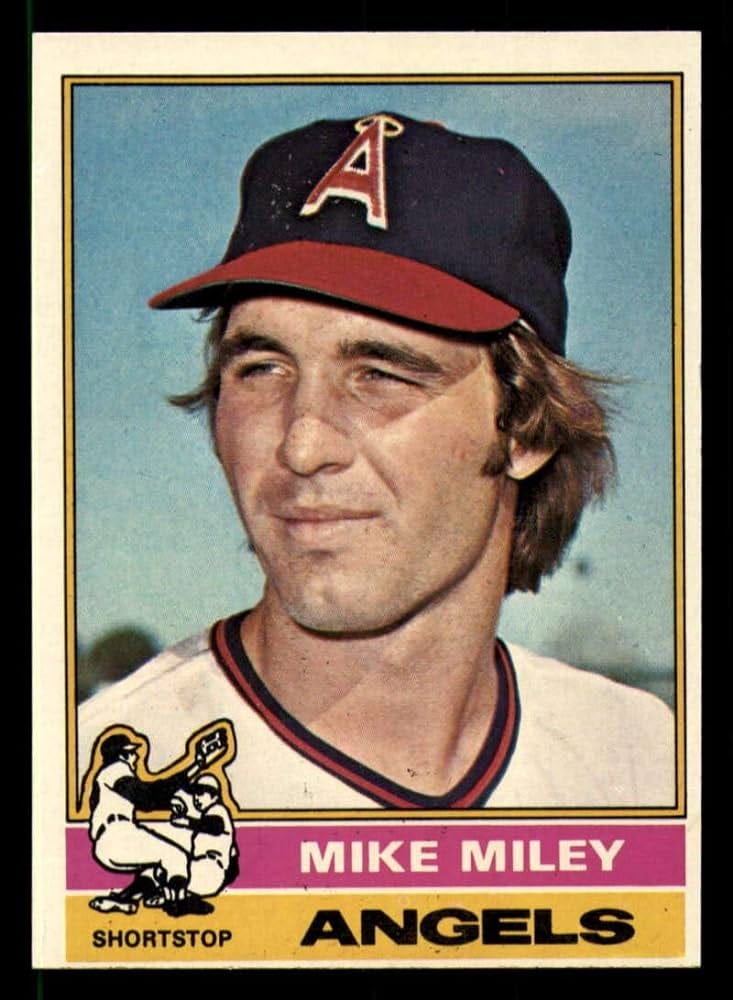When I was a kid back in the 1970s, I first discovered the joy of reading through the books written by Matt Christopher. And of the many books of his that I read, the one that sticks with me the most was The Kid Who Only Hit Homers.
The idea that a kid could play sports and only succeed ran contrary to my own experience, who was the last one off the bench during his team’s games in the apparently now-defunct Khoury League. I was the kid who could hit a whiffle ball like nobody’s business in his own back yard, but turned every eight year-old pitcher into an ace whenever I came up to bat in a real game. At least I could read the story of a kid who never failed.
Mike Miley could have been that kid, but in real life. A star athlete in every sport that he tried, he was recruited heavily out of his hometown of Metairie, Louisiana. He accepted a football scholarship to attend LSU, which was enough to scare every team away from drafting him back in the 1971 draft, except for one. And that one team leads to a rather fascinating “What if?” scenario.
The last team to pick in the first round of the 1971 draft could have taken a high school kid from California named George Brett, or they could have drafted a college player from Ohio named Mike Schmidt. But the Cincinnati Reds took a chance on Mike Miley, instead. Miley played shortstop, and the Reds dangled a $60,000 bonus to persuade him to sign a professional contract.
If you’re thinking about the Big Red Machine juggernaut—which is what they would become in the middle of that decade—stop right there. The acquisition of Joe Morgan from Houston in late 1971 is commonly thought to have been what set this into motion, and the Reds didn’t yet have an everyday shortstop when they drafted Miley.
Dave Concepcion emerged as an everyday player, and a cog in the “Great Eight” that the Reds fielded, in 1973. Who knows if this would have happened with Mike Miley in the Reds’ farm system? And when Conception broke his leg and missed the last half of the 1973 season, perhaps Mike Miley could have stepped in and punched his ticket to big league stardom. But Miley felt an obligation to honor his deal with LSU, and so he declined the Reds’ offer in 1971.
In Miley’s junior season at LSU, he became the team’s starting quarterback and led them to a 9-0 record to begin the season. His ability to rally his team to victory in difficult circumstances earned him the nickname “Miracle Mike.” But the wheels started coming off after a loss at home to Bear Bryant and the Alabama Crimson Tide. The Tigers then lost to Tulane for the first time in a quarter-century, and dropped the Orange Bowl to Penn State.
Miley was then drafted by the California Angels organization in 1974, and skipped his final year of college eligibility to sign with the team. He sailed through their minor league system, as his card from the 1976 season can attest. Again, this would be considered his “rookie card” in modern collector’s lingo, and it would be one of only two cards of his that were ever issued.
On January 5, 1977—not long before the Angels were set to begin their Spring Training—Miley drove from his home in Metairie to his old stomping grounds in Baton Rouge. After catching up with some of his college buddies, Miley got into his car for the drive back home to Metairie and—on a tricky road, with the driver’s side window rolled down and no seatbelt on—this real-life version of the Kid Who Only Hit Homers struck out, in the worst way possible.
Mike Miley died the next day, at the age of 23. As with Lyman Bostock, we’ll never know what heights he could have someday reached. And Topps, just as they did with Danny Frisella, inexplicably released a 1977 card for a player who never so much as reported to Spring Training that year. Regrettably, fate had other ideas in mind. So it goes.
Until tomorrow….




